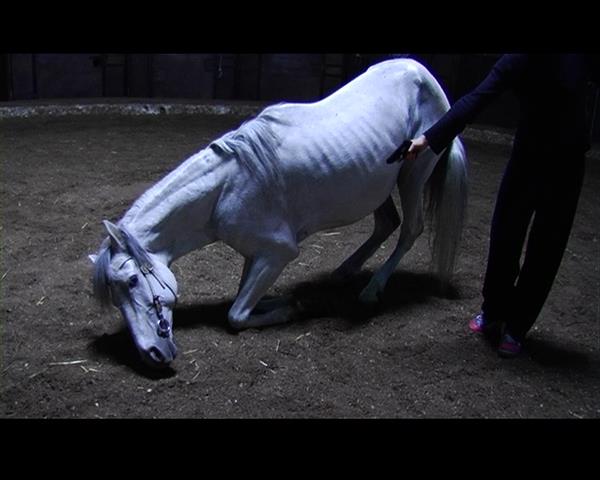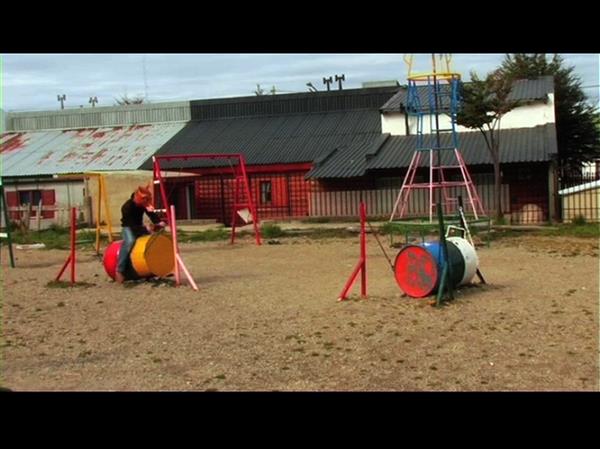Othello
Emilie Pitoiset
video, in color with stereo soundtrack
edition 1/5
1' 36''
2006
Acquisition 2011
Inv. No. 0212
When Emilie Pitoiset composes her oppressive visual sequences, she generally uses photographs or films she has come across, whether in the history of cinematography or at a junk dealer’s store. Her methods of transformation range from copying and plagiarism to imitation or distortion. Her narrative constructions are mingled with pure invention. Her works oscillate between moments of banal normalcy, pathos, and the feeling of lingering danger.
The series Just because is based on snapshots from the 1950s. It shows a group of young people cheerfully looking into the camera’s eye. They gather around a young man who aims his rifle at the person taking the picture. The pictures were obviously shot at some turbulent funfair. What attracted the artist’s interest besides the strange duel (shooting a picture versus shooting with a rifle) was the rifleman’s highly concentrated facial expression. Would he aim at us as the pictures’ beholders any differently if it were not a pose?
In the artist’s two video works in the evn collection, guns play a role as well. The short film Othello presents a dressage horse walking around in a circle and its trainer, who wants to drill dance steps into the animal by threatening it with a pistol. Eventually, he fires the fatal shot, and the white horse collapses dramatically. The opera-like mise-en-scène is so suggestive that the beholder tends to overlook that it is actually the subtle movements of the whip and the trainer’s hardly recognizable gestures that manipulate the horse’s behavior. The logic of the plot is not compatible with the logic of the image.
If in Othello Pitoiset works with the classic dramaturgy of suspense, Miss Misery confronts us with the complete lack of interpretable narrative elements. To begin with, the site, a run-down playground on the outskirts of a small town in some rural area, makes a curiously incidental impression. Since nothing happens, one has time to concentrate on the details, such as the lacquered frame supporting two swings. Its colors must once have been intense, but have faded in the course of time. The two steel drums serving as seats are still more brightly colored. Gradually, they attract the viewer’s attention. One swing is occupied by someone wearing an animal mask and moving back and forth in slow motion while fidgeting with a pistol. When this figure makes its appearance, cheap and enervatingly static jukebox music sets in. Although the disparate pieces of information transmitted by visual and audio elements do not combine to form a coherent story, they are instrumental for the poetic construction of an intangible atmosphere of low-threshold suspense. Similar introductory sequences are known from Italo-Westerns and thrillers in which the viewer is prepared for impending disaster through disconcerting idylls.
Emilie Pitoiset plays with expectations. According to Marc Clément, who curated the exhibition Animals Can’t Laugh, her works “confront viewers with their own perceptive faculties and their necessary limitations, such as the obsessive desire to distinguish truth from illusion.”1
Wolfgang Kos, 2011 (translation: Wolfgang Astelbauer)
1) Marc Clément, press release for the exhibition Emilie Pitoiset. Animals Can’t Laugh, Casino
Exhibitions
Now, At The Latest. videos and other attractions from the evn collection, Kunsthalle Krems, Krems, 2015
Publications
Now, At the Latest, Maria Enzersdorf 2015, p. 6 f
evn collection. 2006–2011, Cologne 2011, p. 118–121

